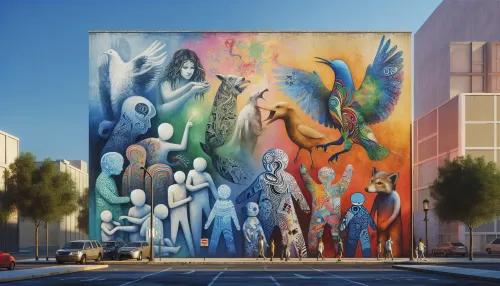
Critique or Empowerment? Examining Autistic Representation in Contemporary Literature and Manga

Autism spectrum disorder (ASD) is a complex neurological condition that affects individuals differently. While there have been progress and increased awareness about autism, representation in contemporary literature and manga has been a significant area of focus. This article will explore the portrayal of autistic characters in both novels and graphic novels, the impact on readers' perceptions of autism and neurodiversity, and the challenges and opportunities in providing accurate and authentic depictions.
The Rise of Autistic Protagonists in Novels and Graphic Novels
In recent years, there has been a noticeable increase in the portrayal of autistic protagonists in literature and manga. Authors and artists are embracing the opportunity to depict diverse characters, with a goal of promoting understanding and empathy. These characters often navigate the world with unique perspectives, highlighting the diversity within the autistic community.
Authors like Jodi Picoult, in her novel "House Rules," and Hikaru Nakamura, in the manga series "Saint Young Men," have depicted autistic characters as central figures. The characters' development goes beyond stereotypical representations, focusing on their individual strengths, challenges, and growth.
The rise of autistic protagonists reflects a positive shift toward inclusivity. It offers autistic readers relatable role models, helping to foster a sense of belonging and affirmation. Moreover, it enables neurotypical readers to gain insight into the experiences and inner workings of individuals on the autism spectrum.
Impact on Readers' Perceptions of Autism and Neurodiversity
The inclusion of autistic characters in literature and manga has the potential to reshape societal perceptions of autism and neurodiversity. Through authentic and well-rounded portrayals, readers are presented with an opportunity to expand their understanding of autism.
Novels and graphic novels provide a window into the lives of autistic individuals, humanizing their experiences beyond clinical definitions. By engaging with these narratives, readers develop empathy and appreciation for the diverse ways in which people experience the world.
Furthermore, exposure to well-crafted portrayals of autistic protagonists can debunk stereotypes and misconceptions surrounding autism. This not only benefits autistic individuals by fostering acceptance but also contributes to creating more inclusive communities.
Empowering Autistic Readers Through Authentic Narratives
For autistic readers, encountering authentic narratives reflecting their experiences can be profoundly empowering. Representation in literature and manga validates their identities and offers a means of connecting with characters who share similar struggles and triumphs.
By engaging with stories that authentically capture the lived experiences of autistic individuals, readers feel seen and understood. This validation fosters a sense of empowerment, affirming that their experiences and perspectives are valued.
Authors and artists play a crucial role in creating narratives that go beyond surface-level representations. By crafting nuanced portrayals that highlight the strengths, challenges, and diversity within the autistic community, they contribute to empowering readers from all walks of life.
Challenges and Opportunities in Accurate Depictions in Literature
While there is a growing presence of autistic characters in literature and manga, ensuring accurate depictions remains a significant challenge. It requires diligent research, consultation with autistic individuals, sensitivity to diverse experiences within the autism spectrum, and avoiding harmful stereotypes.
Authenticity is paramount when portraying autistic protagonists. Authors and artists must strive for accuracy while acknowledging that there is no singular "autistic experience." Embracing diverse narratives is key to capturing the complexity and richness within the autism community.
Moreover, there is an opportunity for collaboration with autistic individuals in co-creating narratives that authentically represent their experiences. This approach not only enhances the authenticity of portrayals but also promotes inclusivity by incorporating firsthand perspectives.
In conclusion, contemporary literature and manga serve as influential platforms for shaping perceptions about autism. The rise of autistic protagonists offers an opportunity for empowerment, fostering understanding, empathy, and inclusivity. However, it also calls for responsible storytelling that prioritizes authenticity and diversity within the autism spectrum.
By critically examining the portrayal of autistic characters in literature and manga, we can cultivate narratives that not only critique prevailing stereotypes but also empower readers through authentic representations.


